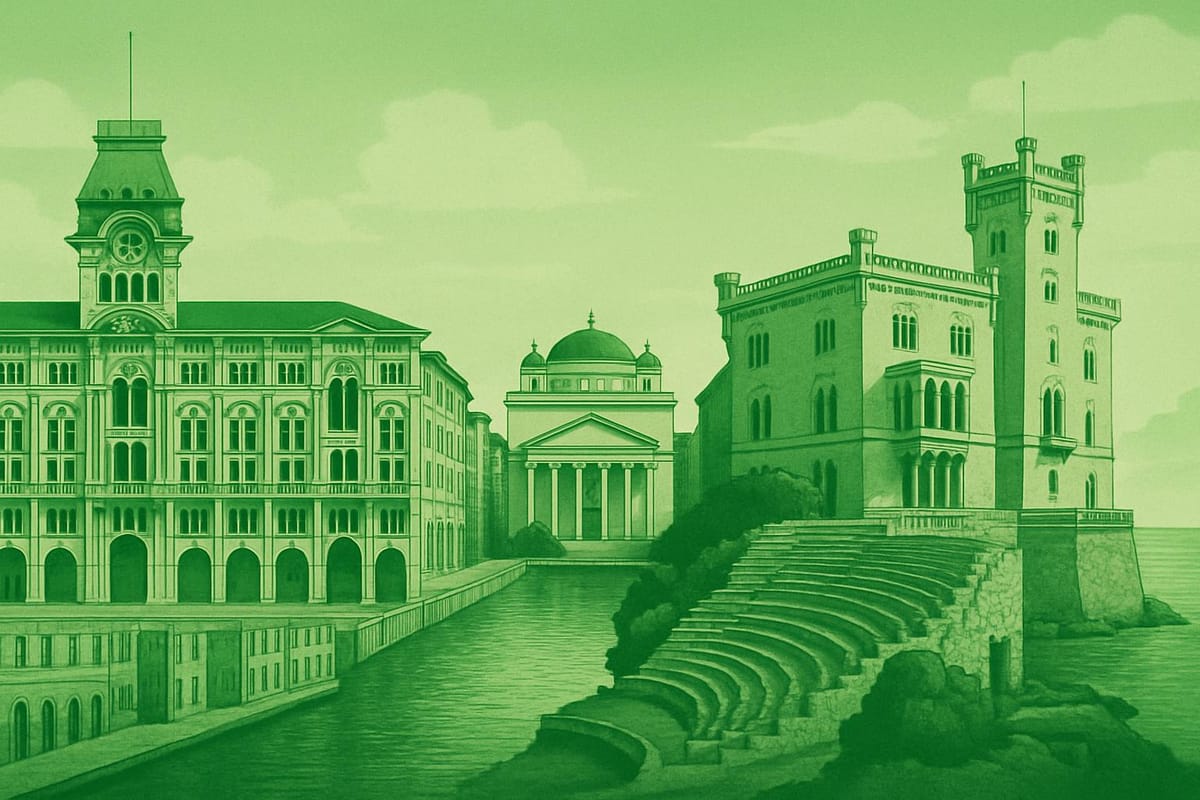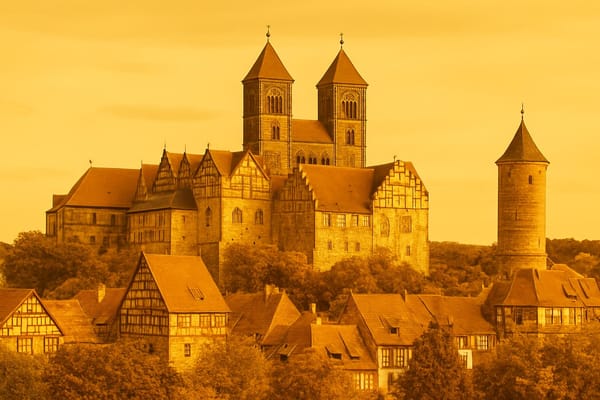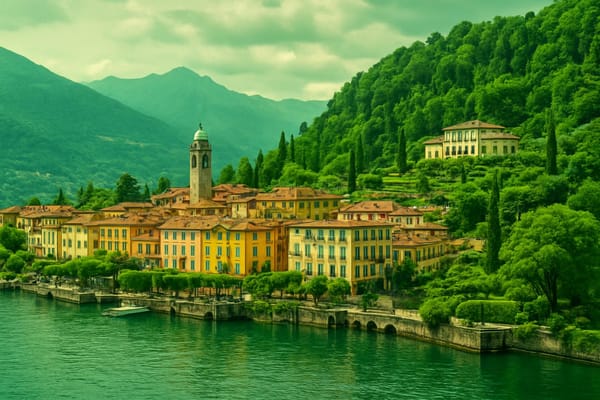Trieste
Historic Adriatic port: Miramare Castle, grand cafes, seafood, cliffside views & vibrant culture.

Important things to know about Trieste
Trieste, a coastal city in northeastern Italy, unfolds as a place where sea, history and cultural crossroads converge into a distinctive urban personality; its identity is shaped by the long shadow of the Austro-Hungarian past, the steady rhythm of the port economy and a resilient local life that blends Italian warmth with Mitteleuropean order, producing a linguistic and culinary tapestry that is both subtle and striking. Streets and neighborhoods reflect a pragmatic elegance-stone facades, cafes that double as informal offices, and a civic calm born of maritime commerce-while everyday rhythms are punctuated by fishermen heading out at dawn, university students animating narrow lanes, and families who have long negotiated bilingual or multilingual routines; this multicultural legacy informs local commerce, artistic scenes and community rituals without resorting to spectacle, making the city feel lived-in and authentic. The surrounding Karst plateau shapes not only the landscape but also local agriculture and flavors, while the maritime climate tempers extremes and favors outdoor social life, from markets to informal music sessions. Economic life balances shipping, research and light industry with a growing emphasis on cultural and knowledge sectors, and the port remains a functional heart rather than merely a tourist backdrop. In daily life, coffee culture plays a symbolic role, cafés serving as social hubs where conversation, work and slow meals blend; in short, Trieste is a city where layered histories and pragmatic modernity coexist, offering a complex, quietly compelling urban experience that rewards curiosity and a willingness to move beyond the obvious.
Sightseeing hot-spots in Trieste
Trieste is a captivating port city where history meets the sea, making it a top choice for sightseeing in Italy. Strolling the grand waterfront you’ll encounter the majestic Piazza Unità d'Italia, Europe’s largest sea-facing square, framed by stately Austro-Hungarian façades and lively cafés. The city’s famed coffee culture invites you to linger in historic bars, while the promenade and the iconic Molo Audace provide perfect photo opportunities at sunrise and sunset.
For panoramic views and romantic escapes, head to Castello di Miramare, perched on rocky cliffs with beautifully kept gardens and sweeping Adriatic vistas that belong on any list of things to do in Trieste. Nature lovers will find the rugged Carso plateau ideal for walking and cycling, where limestone trails meet dramatic sea cliffs. Nearby, the charming Canal Grande and the ancient Teatro Romano hint at layers of Trieste attractions that span Roman, Habsburg, and Venetian influences, while adventurous visitors can explore the immense Grotta Gigante, one of the world’s largest show caves.
Cultural sightseeing in Trieste continues on San Giusto hill, where the cathedral and castle offer historic interiors and unrivaled skyline views. Museums like Revoltella and maritime exhibits enrich your understanding of the city’s cosmopolitan past, and local seafood paired with regional wine completes a day of discovery. Whether you’re planning a short itinerary or an extended stay, Trieste rewards those seeking off-the-beaten-path gems and classic city highlights alike.
Hotels to enjoy in Trieste
Trieste is a coastal gem in northeastern Italy where a wide range of hotels in Trieste cater to travelers seeking history, culture, and panoramic Adriatic vistas. Whether you are searching for luxury suites with private balconies overlooking the harbor, charming boutique hotels tucked into the Old Town, or budget-friendly rooms a short walk from the train station, Trieste hotels blend Austrian-Hungarian architecture with Italian seaside flair. Many properties emphasize sea view rooms and terraces, easy access to the waterfront and the iconic Piazza Unità d'Italia, and proximity to landmarks like Miramare Castle and the bustling port. Business travelers will appreciate conference facilities and central locations near the Fiera, while couples and families often choose quieter neighborhoods for a relaxed stay. The best hotels in Trieste focus on local hospitality, regional cuisine at on-site restaurants, and thoughtful amenities such as complimentary Wi-Fi, breakfast featuring Italian specialties, and concierge services to help plan excursions along the Gulf of Trieste.
Choosing the right accommodation in Trieste depends on your travel style and priorities: convenience to the city center, panoramic sea views, or a peaceful base near green spaces. For a true stay in Trieste, consider properties that balance authentic local character with modern comforts-heated rooms in cooler months, air conditioning in summer, and accessible parking for those exploring the wider Friuli-Venezia Giulia region. Trieste hotels often provide easy links to ferries, train connections to Venice and Slovenia, and curated experiences like coffeehouse tours or visits to historic literary cafés where James Joyce once wrote. By focusing on location, amenities, and guest reviews, you can find accommodations that enhance your visit, turning a short stopover into an immersive Italian coastal experience that highlights why Trieste remains a favored destination for discerning travelers.
Restaurants to try in Trieste
Trieste is a coastal gem where restaurants blend Italian flair with Austro-Slovenian influences, creating a dining scene that's both cosmopolitan and authentic. Strolling from Piazza Unità d'Italia toward the Porto Vecchio, you'll find everything from elegant seafood bistros to cozy osterie and bustling caffè that serve strong espresso alongside light pastries. The best restaurants in Trieste capitalize on fresh Adriatic catch and seasonal local produce, offering dishes like grilled fish, creamy polenta, and reinterpretations of jota, the hearty bean-and-sauerkraut soup that speaks to the region's history. With a focus on conviviality, many venues pair house-made preserves and cured meats with Friulian and Slovenian wines, making every meal a taste of the borderland's rich culinary tapestry.
For travelers wondering where to eat in Trieste, prioritize small family-run trattorie for traditional flavors and contemporary kitchens for inventive plates that honor local ingredients. Nightlife around the waterfront brings lively seafood restaurants and refined tasting menus, while morning walks reveal historic coffee houses that shaped Triestine culture. Whether you search for scenic harbor views, rustic comfort food, or Michelin-level creativity, the restaurants of Trieste deliver variety and authenticity; reserving at popular spots is wise during peak season, and asking locals for recommendations often leads to the most memorable meals in this unique northeastern Italian city.
Best shopping stops in Trieste
Trieste is a refined gem for shopping in Italy, where Austro-Hungarian elegance frames streets lined with chic boutiques and independent ateliers. Strolling along Via San Nicolò and Via Roma reveals a mix of high-end labels, local designers and cozy bookshops that mirror the city’s literary past; the nearby Borgo Teresiano offers a cluster of artisan stores and antique dealers perfect for treasure hunting. Coffee culture is woven into the retail experience-Trieste is the home of Illy, and sampling a cup in historic cafés like Caffè San Marco or Caffè degli Specchi feels like part of the city’s shopping ritual. For food lovers, specialty shops selling Karst prosciutto, regional wines and fine chocolates make Trieste shopping a gourmet affair as well as a fashion one, so visitors often combine boutique browsing with tastings of local delicacies.
Beyond the polished storefronts, the city’s markets, galleries and independent workshops shape a distinct shopping identity that’s ideal for finding genuine gifts and unique souvenirs. Weekly markets and covered food halls showcase fresh seafood, cheeses and hand-made preserves from the surrounding Carso hills, while small studios and craft shops sell ceramics, textiles and bespoke jewelry inspired by the sea and the city’s multicultural heritage. Whether you’re focused on Trieste boutiques, culinary specialties or antique finds, the best of shopping Trieste is its blend of refined style, historic cafés and regional flavors-an elegant, sensory experience that lingers long after purchases are packed.
Nightlife highlights in Trieste
Trieste nightlife unfolds along its luminous seafront and winding streets, where the mix of Austro-Hungarian charm and Mediterranean openness creates an unforgettable evening. Start with an aperitivo by the water near Piazza Unità d'Italia, enjoying sunset views and relaxed crowds before moving into the old town for cozy cafés and historic coffee houses that spill into the streets. Trendy bars and cocktail lounges around Molo Audace and via San Nicolò offer inventive drinks and panoramic vistas of the Adriatic, while quieter wine bars invite you to sample Friulian vintages. The balance of cultured conversation, street-light reflections on the sea, and approachable culinary options makes Trieste nightlife appealing to visitors seeking both romance and authenticity.
As the night deepens, Trieste's entertainment scene shifts to live music and late-night venues where DJs, jazz trios, and acoustic sets bring energy to intimate spaces. Small clubs and cultural hubs host local talent and international acts, creating a diverse music calendar that keeps the city buzzing until the early hours. Outdoor summer events and seasonal festivals add layers to the nightlife landscape, with waterfront terraces and hidden courtyards transforming into vibrant social spots. Whether you prefer a seafront aperitif, a lively live music show, or a quiet post-dinner stroll along the pier, Trieste nightlife delivers memorable moments against a uniquely scenic backdrop.
Getting around in Trieste
Trieste’s air and rail connections make the city an accessible gateway to the northeastern Adriatic: Trieste Airport (TRS), officially at Ronchi dei Legionari, handles a mix of scheduled, seasonal and low-cost flights and is served by regular airport shuttle buses, taxis and car hire that reach the city center in roughly 30–40 minutes, while conveniently linking travelers to the wider Friuli Venezia Giulia region; on the rail side Trieste Centrale is the main hub with frequent train connections to Udine, Venice and other Italian cities as well as cross-border services toward Slovenia and beyond, offering options for both regional commuters and longer-distance travelers, and making it simple to plan day trips or onward journeys by public transport; whether you’re searching for the fastest way to get from the airport to downtown, comparing train timetables, or organizing transfers to cruise terminals and nearby destinations like Istria, Trieste’s combined airport and rail network provides balanced choices for convenience, cost and travel time, supporting tourism, business travel and efficient regional mobility.
Culture must-see's in Trieste
Trieste, Italy, sits at a crossroads of Latin, Slavic and Germanic cultures, and its culture highlights reflect that layered history in every stone and café. Strolling through Piazza Unità d'Italia, one feels the scale of this port city and its Austro-Hungarian elegance, while nearby Miramare Castle offers romantic views over the Gulf and a glimpse into the aristocratic past. For museum lovers, Museo Revoltella and the civic collections showcase modern and contemporary art, and the solemn Risiera di San Sabba memorial confronts 20th-century tragedy with a powerful historical narrative. Classical music and opera thrive at Teatro Verdi, and the city's architectural mix-from neoclassical façades to charming seafront cafés-makes exploring Trieste Italy attractions a study in contrasts that appeals to culture travelers seeking depth and variety.
Beyond monuments and museums, Trieste’s living cultural scene keeps the city vibrant year-round: the famed coffee culture is embodied by historic venues like Caffè San Marco, where literary figures such as James Joyce and Italo Svevo once debated ideas that shaped modern European letters. Contemporary festivals, from the international Trieste Film Festival to the spectacular Barcolana sailing regatta, draw visitors interested in cinema and maritime traditions alike. Culinary offerings blend seafood with Slovenian and Central European influences, while galleries, street art, and performance spaces sustain a dynamic creative life. Whether you’re researching Trieste museums or planning to experience the city’s cultural highlights of Trieste, the compact, walkable center makes it easy to immerse yourself in a unique corner of northeastern Italy that rewards curiosity at every turn.
History of Trieste
Trieste's story begins long before the modern nation-state, rooted in its ancient identity as Tergeste, a coastal settlement shaped by Illyrian and Roman influences and later by medieval maritime commerce. Perched on the northeastern edge of the Adriatic, the Port of Trieste became a pivotal gateway between Central Europe and the Mediterranean, a role that deepened when the city placed itself under the protection of the Habsburg rulers in 1382. Under Habsburg and later Austro-Hungarian administration Trieste flourished as a free port and cosmopolitan hub, attracting merchants, sailors, and intellectuals from across Europe and the Balkans. Its streets and architecture tell a layered tale: Roman foundations, Venetian and Austrian civic buildings, and grand 19th-century neoclassical facades that reflect the city’s rise as a center for trade, shipbuilding, and finance. The blend of Italian, Slovenian, German, Greek, Jewish, and other communities fostered a multicultural urban life that became central to the city's identity and its enduring appeal.
The modern phase of the history of Trieste saw dramatic upheavals across two world wars and the Cold War, marking it as a contested prize because of its economic and strategic importance. After World War I Trieste was annexed to Italy, a change that altered demographics and politics and was followed by the turbulent years of Fascist rule and World War II. In 1947 the city entered a unique international chapter as the Free Territory of Trieste, administered temporarily by Allied and Allied-occupied forces until its reintegration into Italy in 1954. Despite these disruptions, Trieste rebuilt its role as a commercial and cultural crossroads: the Port of Trieste remained a vital maritime link, while figures such as James Joyce and institutions like Miramare Castle contributed to its rich cultural tapestry. Today the history of Trieste is visible in its museums, multilingual newspapers, and lively festivals, and the city's strategic position near Slovenia and the wider Balkans keeps it relevant in European trade and diplomacy. Trieste’s layered past-ancient port, imperial entrepôt, contested border city, and modern European gateway-continues to shape its identity and attract visitors who want to experience the unique fusion of cultures and histories along the Adriatic.



